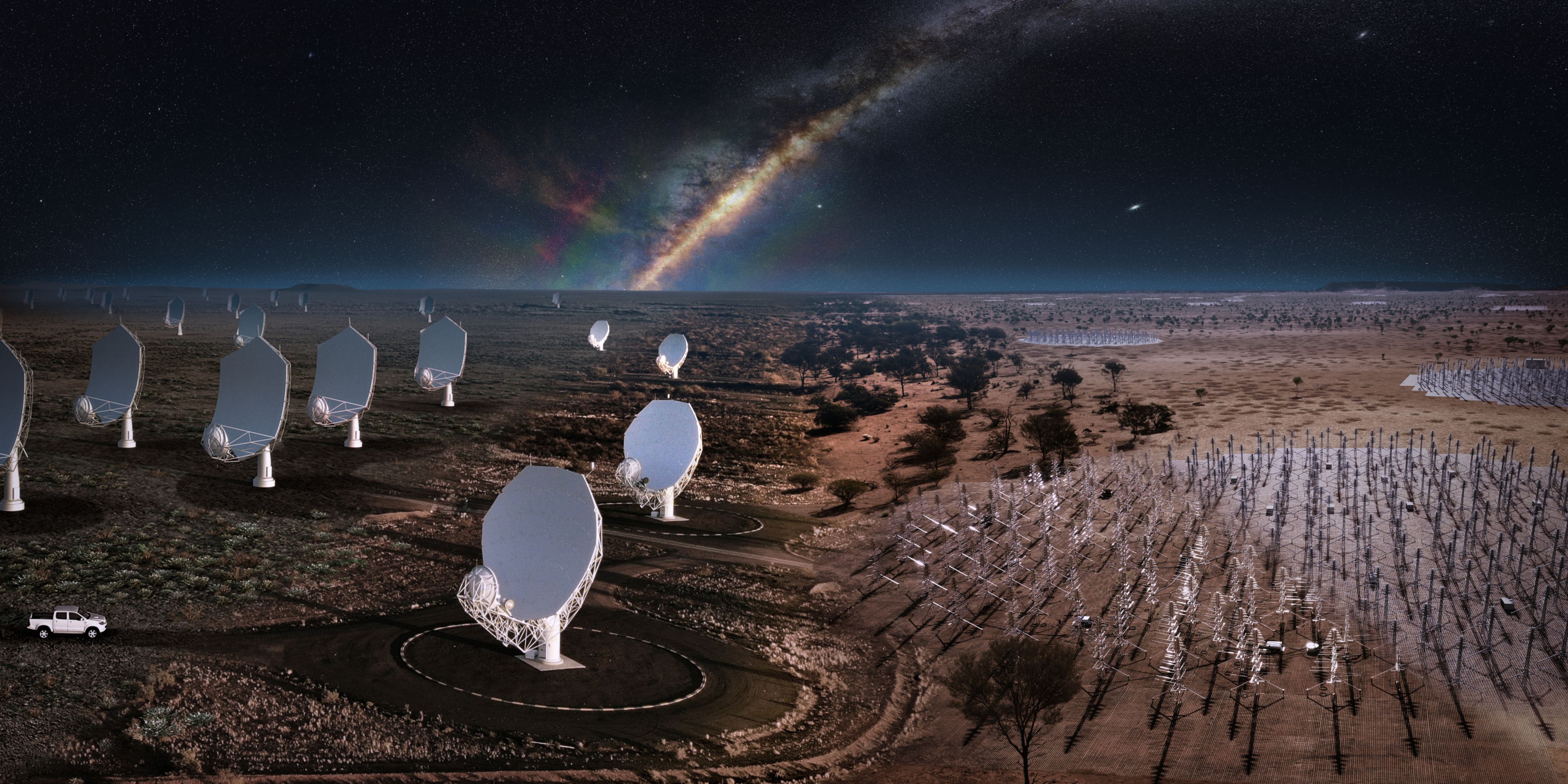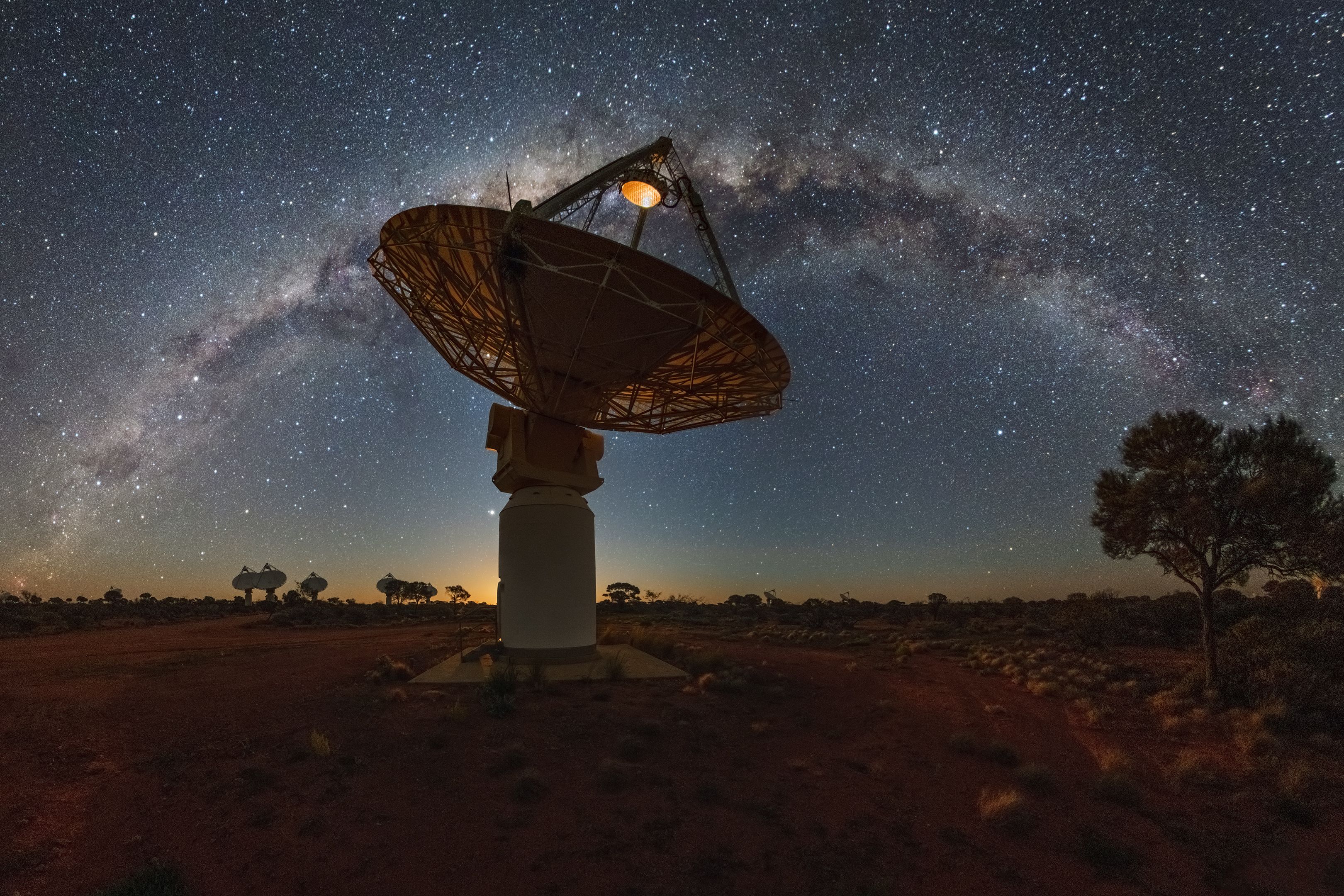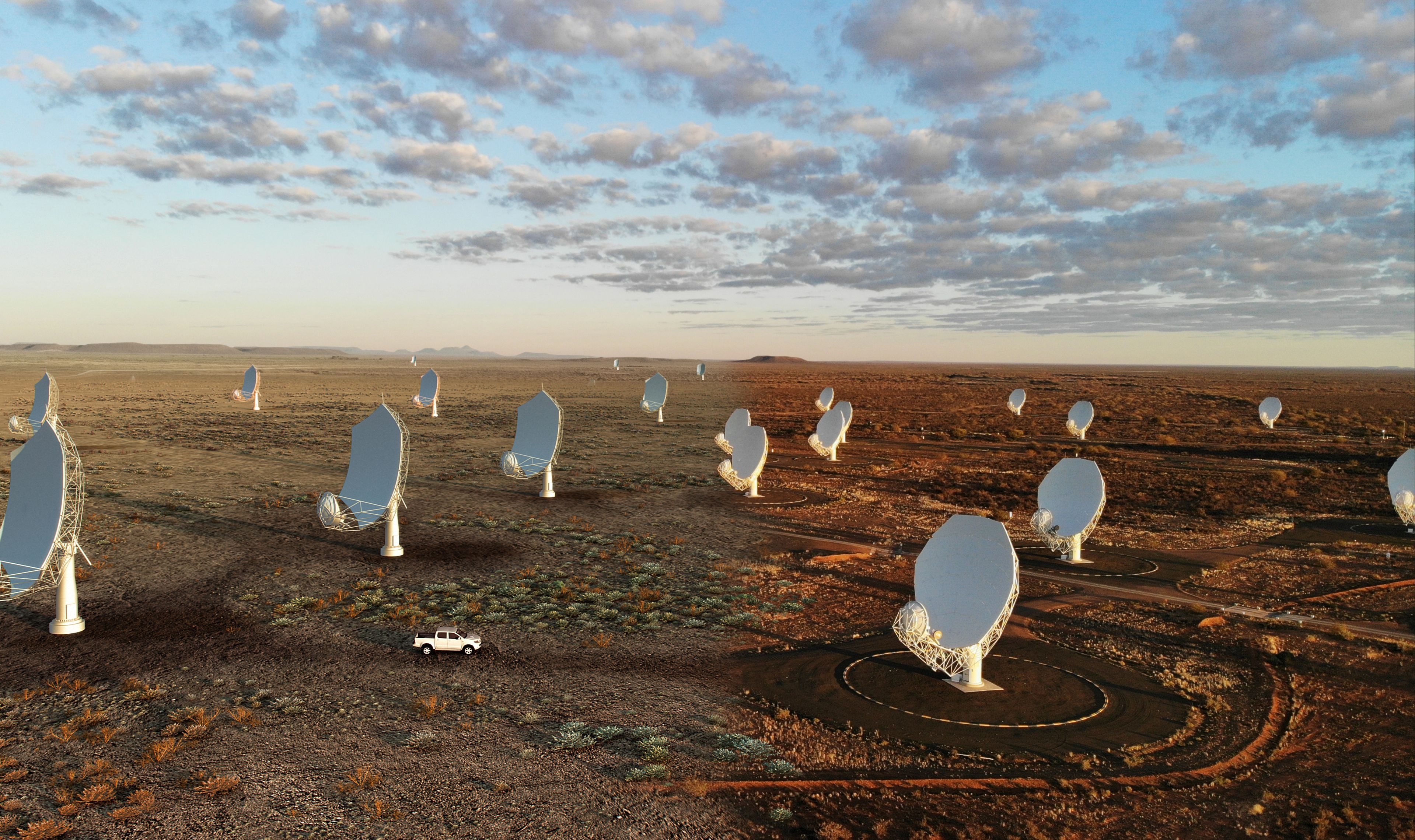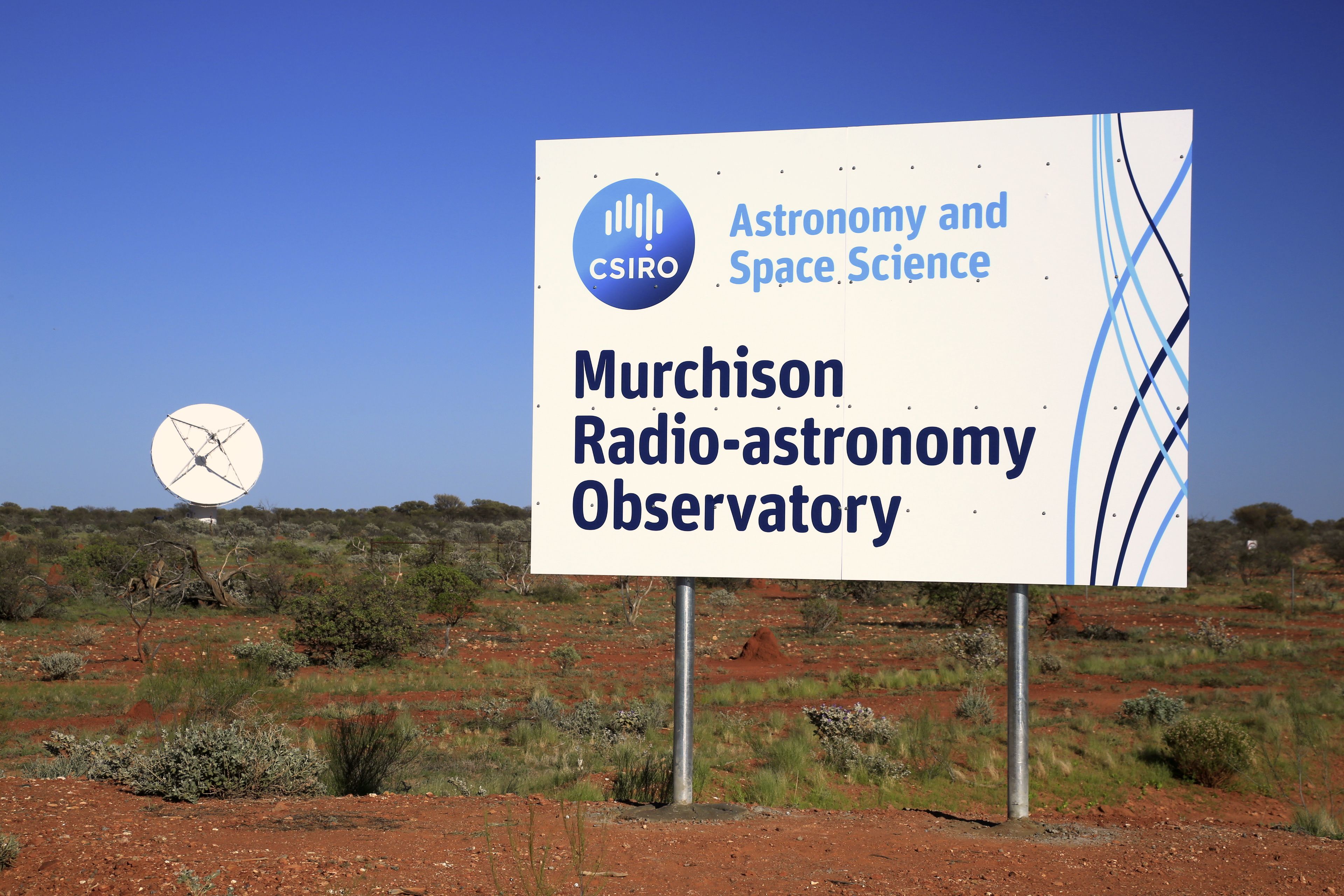Hello, anyone there? Radio telescopes the key to finding life beyond Earth
A

Colorado Springs, Colorado.
1899.
Nikola Tesla, one of the fathers of electricity, sat in his laboratory overcome with the amazement of what he had just discovered.
Then fear began to creep upon him.
Terrified of his success, he thought he had just received radio communications from Mars.
“I can never forget the first sensations I experienced when it dawned upon me that I had observed something possibly of incalculable consequences to mankind,” he wrote in a contribution to Collier’s Weekly in 1901.
“The feeling is constantly growing on me that I had been the first to hear the greeting of one planet to another,” he said.
Tesla was afraid and he had every right to be.
As the famous science fiction writer Arthur C. Clarke once said, the thought of being alone and not alone, is both equally terrifying.
Alas, Tesla was incorrect in his assumption.
He did not in fact communicate with other-worldly beings.
It's believed he had received the signal from a radio device that Guglielmo Marconi was testing at the same time nearby in the Atlantic.
Marconi was another great mind who in 1920 claimed to have received radio signals from inhabitants from another planet.
Tesla and Marconi may have failed to find life beyond our planet but their dream is becoming closer to reality than you think.
The Square Kilometre Array (SKA) project was recently given the green-light to start construction by the International SKAO Committee.
Construction of these new radio telescopes might be the key to finally finding extraterrestrial life.
This project can not be understated - it's a game changer.
Supported by a global coalition of 16 countries, the project will begin construction in Australia and South Africa will cost more than $3 billion dollars.

A Radio Telescope alone with the night. Picture Credit: CSIRO
A Radio Telescope alone with the night. Picture Credit: CSIRO
Where the radio observatories will be built using Google Earth Video credit: Declan Olson
Where the radio observatories will be built using Google Earth Video credit: Declan Olson
In the Northern Cape, South Africa, the South African Radio Astronomy Observatory (SARAO) will construct 197 dish antennas that receive mid-frequency radio waves.
Closer to home in Murchison, Western Australia, the Commonwealth Scientific and Industrial Research Organisation (CSIRO) will construct 131,072 two-metre tall antennas that receive low-frequency radio waves.
The amount of the data these radio telescopes will process is mind-boggling.
A supercomputer will receive roughly 7 terabits of data from the radio telescopes in Australia every second.
It is the equivalent of the average Australian home broadband speed becoming 100,000 times faster.
A spokesperson for the CSIRO said the SKA project will have huge benefits for Australia and its scientific community.
“Australian astronomers will be at the forefront of astronomical discoveries with access to world-leading SKA science facilities and data,” they said.
The spokesperson said during construction the project would create more than 350 jobs and it will add an extra 250 new jobs when operational.
Australian economic consulting firm ACIL Allen estimated that in the first 30 years of operation the array would inject roughly $1.8 billion into Australia's economy.

Artist Impression of SKA-Mid in Northern Cape, South Africa Picture Credit: SKAO and SARAO
Artist Impression of SKA-Mid in Northern Cape, South Africa Picture Credit: SKAO and SARAO
Animation of the build up of SKA-low Video Credit: SKA Organisation
Animation of the build up of SKA-low Video Credit: SKA Organisation
“This project is a great example of how science and technology can drive industry forward, growing our economy and creating the jobs of tomorrow,” they said.
Curtin University senior researcher Dr Danny Price said the SKA was a huge technological achievement.
He said the main difference the array would offer compared to what scientists had now was the number of antennas and the amount of data that they generate.
He said the project could spark a range of new technology being invented.
“There is a lot of overlap with radio astronomy and telecommunications engineering," Dr Price said.
“Already there has been a new 4G antenna based off the SKA design."
One of the biggest achievements and where “SKA really shines” is the speed it will survey the sky.
“It's about 50-150 times faster than the current best telescopes," he said.
“So it'll be able to detect smaller and fainter features faster."
A member of the International Centre for Radio Astronomy Research, Dr Price is very excited about how much more we will learn about our universe.
He said SKA would teach us more about the “Cosmic Dawn”, which is when the first stars and black holes were formed.
One of the many goals of the project was to also search for extraterrestrial life, a discovery Dr Price believed would be one of the biggest in the history of mankind.
He said finding life would be the "first step on a journey of unimaginable marvel".
“It would tell us that we are not alone in the universe," he said.
“Conversely, we may discover that life is incredibly rare; that we are alone in our Galaxy."
Either way, he said, we won’t know unless we look.

Murchison Radio Observatory in 2018 Picture Credit: CSIRO
Murchison Radio Observatory in 2018 Picture Credit: CSIRO
Nick Nielsen, an independent scholar and science fiction author, said the project would be able to detect “biosignatures” meaning life, but it could in the form of a micro-organism.
He said SKA could potentially detect “technosignatures” which implied the signals were intentionally or unintentionally produced with technology.
Finding sentient lifeforms on the same level as us or more could change us in a way that could be unprecedented, he said.
“The reception of a high information signal could upend our civilization," Mr Nielsen said.
“Carl Sagan compared such an event to the deciphering of the Rosetta Stone and to the contact between European explorers and native Americans."
In the effort to find life beyond our planet, humans may finally be able to answer the questions we have about our own existence.
As the ancient Greek philosopher Socrates once said, "man must rise above the Earth—to the top of the atmosphere and beyond—for only thus will he fully understand the world in which he lives."

300 kilometres northeast of Geraldton, Western Australia Picture Credit: ICRAR/Curtin University
300 kilometres northeast of Geraldton, Western Australia Picture Credit: ICRAR/Curtin University
